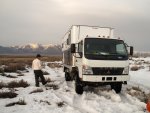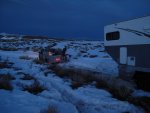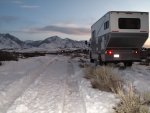Re:
I'm curious about why you feel the pivot would be better in the front. It seems like the rear of the frame twists more than the front which would cause the camper to move more than if the pivot was in the rear. I haven't driven one, so this is just a guess on my part.
Thanks, Earl
Earl,
I'm not sure where the frame twists the most.
The first reason I put my fixed points in the front is I wanted to minimize the mismatch between the cab and the camper because I was going to make a permanent pass-thru. I will still have a pass-thru but through two independent windows, allowing me to easily use the truck without the camper. The second reason is it seemed easier from a design standpoint to put the pivot in the rear.
I think an advantage of placing the fixed points in the rear is less body roll. Basically with the engine, cab, and camper all anchored near the front, the front suspension must carry a larger load in resisting body roll because the frame can twist between where that weight is mounted and the rear suspension. The rear suspension carries more weight but the pivot can't transfer a torsional load to the truck frame going around a curve. I can confirm the affect (twist) if I rock my truck/camper back and forth on level ground.
My suspension is completely stock. I think an ideal system on the Fuso would engage a front sway bar or lock the rear pivot while on the road. I'm going to experiment with my pivot air springs. Currently the pressure is equalized between them so they always apply the same upward force, but I am going to pressurize them independently which will resist the pivot movement.
If I was going to start from scratch with a 3pt system I would try to place the pivot as close to the cab as possible and the fixed points over the rear axle.




